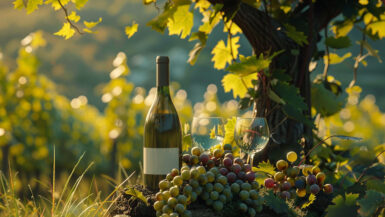Plunge into the gutsy world of natural wines—where every bottle packs a punch of pure, untamed grape goodness. These bottles are the untamed souls of the wine world, crafted by rule-breakers and risk-takers who believe wine tastes better when left wild. As buzz around natural wines swells, so does the thirst to spot and savor these authentic brews.
Sniffing out a true natural wine isn’t about hunting for an ‘organic’ tag; it’s about diving deep into a philosophy that embraces chaos over control and nature over nurture. Today, we’re going to strip down the pretense and get real about what to look for in a bona fide natural wine. So fill up your glass, settle in, and let’s explore the raw, radical hallmarks that make these wines the choice for the free-spirited. Here’s to the rough-around-the-edges, wildly wonderful world of natural winemaking—sip back and enjoy the ride!
How can you tell if a wine is natural?
To spot a natural wine, start by eyeballing the bottle for badges of honor like “organic” or “biodynamic” labels—these are your first clues of minimal chemical warfare and a nod to sustainable farming rebellions. But the real tell? These wines play by their own rules in the looks and flavor departments. Expect the unexpected—cloudier appearances, funky flavors, and a taste that dances to its own beat. For the inside scoop, chat up the winemaker or your friendly wine shop rebel. They’ll spill the beans on whether the wine was born from spontaneous fermentation using native yeasts and just a whisper of sulfur. It’s the wild world of winemaking—raw, real, and radically natural.
Understanding Certifications
Diving into the nitty-gritty of natural wine certifications is like decoding secret society badges—each one tells a tale of eco-warrior standards and nature-first practices. Let’s break it down:
Demeter Certification: This is the gold standard for biodynamic agriculture. Think of it as the wine’s diploma for not just playing nice with nature but truly championing its causes. Biodynamic practices go beyond organic, intertwining mystical elements like lunar cycles and holistic farming methods that treat the vineyard as a self-sustaining organism. This isn’t just about ditching chemicals; it’s about creating a thriving ecosystem in the vineyard that reflects in every sip of your wine.
Organic Certifications: These vary by region—USDA Organic in the U.S., ECOCERT for Europe, and NASAA in Australia, to name a few. Organic certification is your assurance that the grapes in your glass grew up without synthetic pesticides or fertilizers. It’s about keeping it clean and letting the grapes get down with their natural selves, from soil to bottle.
Each certification comes with its own set of rigorous standards and regular check-ups to ensure that winemakers aren’t just talking the eco-talk but walking the walk. So, when you see one of these labels, it’s not just a mark of quality; it’s a promise of wine that respects the earth and tickles your taste buds without the artificial fanfare.





Leave a reply